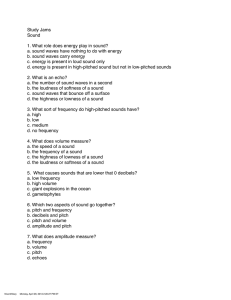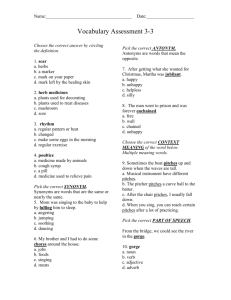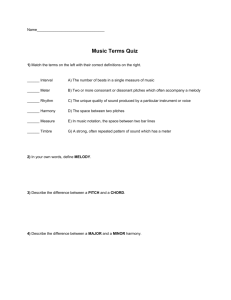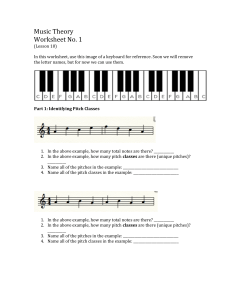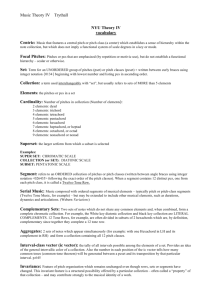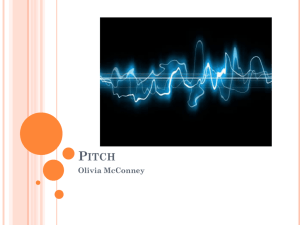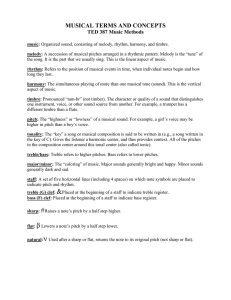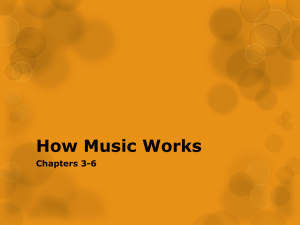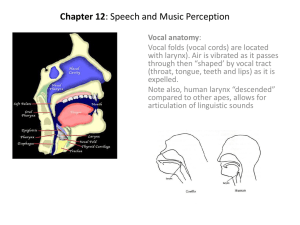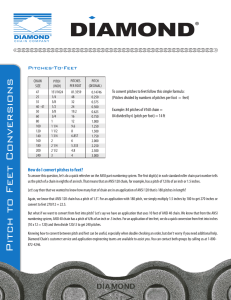Vocabulary for a Cross-Cultural Musical Analysis
advertisement
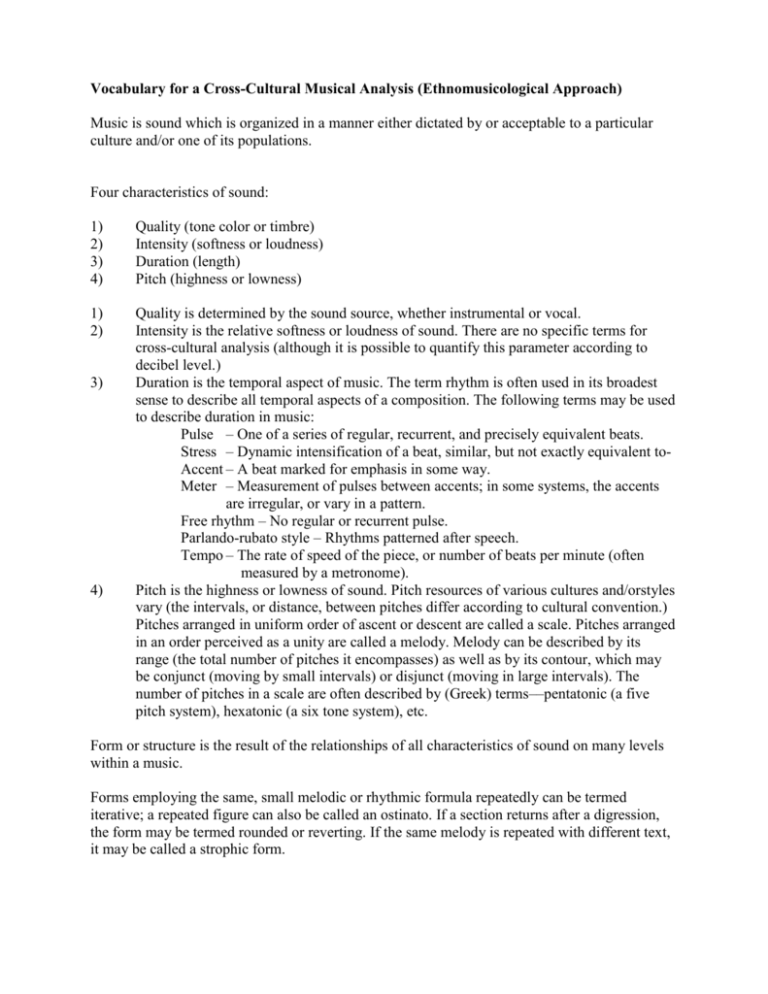
Vocabulary for a Cross-Cultural Musical Analysis (Ethnomusicological Approach) Music is sound which is organized in a manner either dictated by or acceptable to a particular culture and/or one of its populations. Four characteristics of sound: 1) 2) 3) 4) Quality (tone color or timbre) Intensity (softness or loudness) Duration (length) Pitch (highness or lowness) 1) 2) Quality is determined by the sound source, whether instrumental or vocal. Intensity is the relative softness or loudness of sound. There are no specific terms for cross-cultural analysis (although it is possible to quantify this parameter according to decibel level.) Duration is the temporal aspect of music. The term rhythm is often used in its broadest sense to describe all temporal aspects of a composition. The following terms may be used to describe duration in music: Pulse – One of a series of regular, recurrent, and precisely equivalent beats. Stress – Dynamic intensification of a beat, similar, but not exactly equivalent toAccent – A beat marked for emphasis in some way. Meter – Measurement of pulses between accents; in some systems, the accents are irregular, or vary in a pattern. Free rhythm – No regular or recurrent pulse. Parlando-rubato style – Rhythms patterned after speech. Tempo – The rate of speed of the piece, or number of beats per minute (often measured by a metronome). Pitch is the highness or lowness of sound. Pitch resources of various cultures and/orstyles vary (the intervals, or distance, between pitches differ according to cultural convention.) Pitches arranged in uniform order of ascent or descent are called a scale. Pitches arranged in an order perceived as a unity are called a melody. Melody can be described by its range (the total number of pitches it encompasses) as well as by its contour, which may be conjunct (moving by small intervals) or disjunct (moving in large intervals). The number of pitches in a scale are often described by (Greek) terms––pentatonic (a five pitch system), hexatonic (a six tone system), etc. 3) 4) Form or structure is the result of the relationships of all characteristics of sound on many levels within a music. Forms employing the same, small melodic or rhythmic formula repeatedly can be termed iterative; a repeated figure can also be called an ostinato. If a section returns after a digression, the form may be termed rounded or reverting. If the same melody is repeated with different text, it may be called a strophic form.

